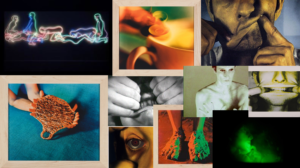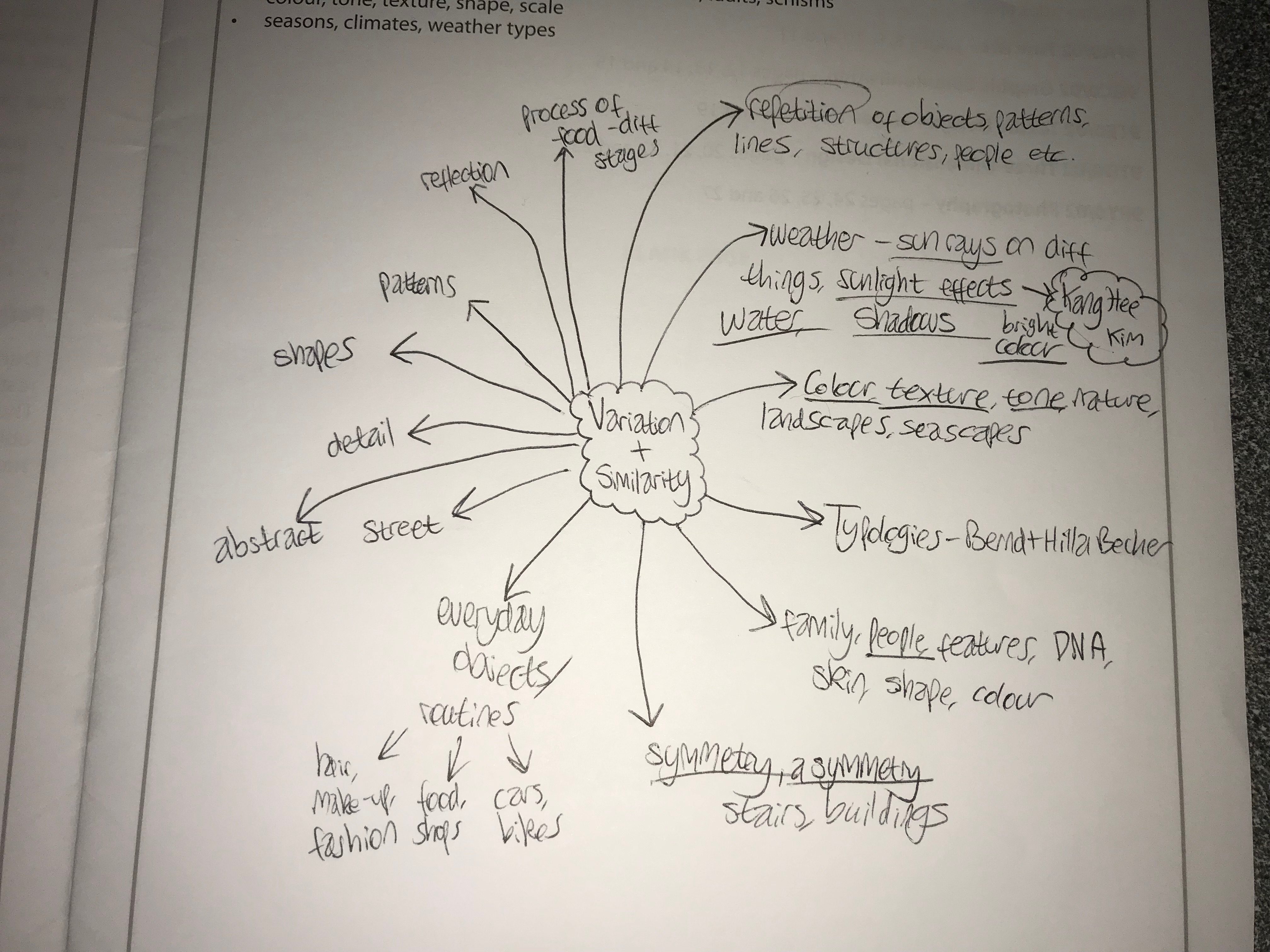I’m videoing this everyday routine because it is something that everyone does, yet everyone does it in a similar way. I decided to take a video of a model doing her hair and make up.
All posts by Erin Luis
Filters
Video Art
Video art is an art form that relies on using visual technology as a way of creating a visual and/or audio medium.
One pioneer of video artists I found interesting is Bruce Nauman.
Bruce Nauman

Bruce Nauman is an American artist. His work ranges from creating sculptures, photography, neon, videos, drawing, printmaking and performance. He lives near Mexico and give up painting to focus his work on sculptures. A lot of his work is characterised by an interest in language, often involving itself in a playful, mischievous manner. He has a strong interest in setting the metaphoric and descriptive functions of language against each other. Nauman began working in film with Robert Nelson and William Allen whilst teaching at the San Francisco Art Institute. He produced his first videotapes in 1968. He describes the transition of film to video as: “With the films, I would work over an idea until there was something that I wanted to do. Then I would rent the equipment for a day or two, so I was more likely to have a specific idea of what I wanted to do. With the videotapes, I had the equipment in the studio for almost a year; I could make test tapes and look at them, watch myself on the monitor or have somebody else there to help. Lots of times I would do a whole performance or tape a whole hour and then change it. I don’t think I would ever edit but I would redo the whole thing if I didn’t like it.” Nauman uses his body to explore the limits of everyday situations. He explored video as a theatrical stage and used the camera as a close observation device. He was influenced to produce this video art through the experimental work of Merce Cunningham, Meredith Monk, La Monte Young, Steve Reich, and Phillip Glass.
Here are a few links to some of Bruce Nauman’s video art:
Another pioneer of video art that I have researched due to my interest of capturing something similar is Martha Rosler.
Martha Rosler
Martha Rosler was born in 1943 in Brooklyn, New York. Roster grew up in New York and was involved in poetry, as well as participating in civil rights and anti-war protests. Looking at the outcome of her career, a lot of Rosler’s art reflected her interest in consciousness and awareness, raising a variety of social issues. ‘A budding gourmet’ inspired Rosler’s first video piece, which features the silhouette of a woman describing how gourmet cooking facilitates a better and easier life. Her seminal feminist work, ‘Semiotics of the Kitchen’ (1975), expands upon these issues but is involved with more direct angst and frustration. In several videos that confront the viewer with a range of spliced scenes, Rosler critiqued the coercive and dishonest effects of the relationship between the media, politics, and the private society circle. Some examples of this work is: ‘Domination and the Everyday’ (1978) and ‘If It’s Too Bad to Be True, It Could Be DISINFORMATION ‘(1985).
Here is a link to one of Martha Rosler’s video art:
I want to experiment with video art in a similar way to Rosler as I want to portray an everyday task and routine that I do.
Variation and Similarity
What is variation?
Variation is “a change or slight difference in condition, amount, or level, typically within certain limits.”
On googles dictionary, it also defines as “a different or distinct form or version of something.”
My first thoughts on how to approach this noun which appears as part of our exam theme, is to explore differences in objects or people. Straight away, I felt that I could base my exam on simple, everyday things, such as everyday routines that people do, as well as everyday objects, such as food, flowers, shoes and so on. Most people do similar things every morning, like brushing their teeth, eating breakfast, and travelling to school/work in a car, a bus or walking or cycling. This leads me onto the other part of the exam theme, which is ‘similarity’.
What is similarity?
Similarity is “a similar feature or aspect.” Google’s example of the noun in a sentence is “the similarities between people of different nationalities.”
I feel that similarity can be explored in many interesting ways; for example, people and families would be interesting due to how family have similar features, like face shape, skin and colour so taking a portrait approach would be intriguing. Additionally, people and bodies is another portrait approach that could be successful because everyone has the same body parts, yet linking to the other part of the exam theme ‘variation’, everyone’s body parts and features varies due to DNA.
My broad range of aspects to focus in on for this exam is bringing me new ideas that I could explore. Below is a mind map of some ideas that I have come up with:

